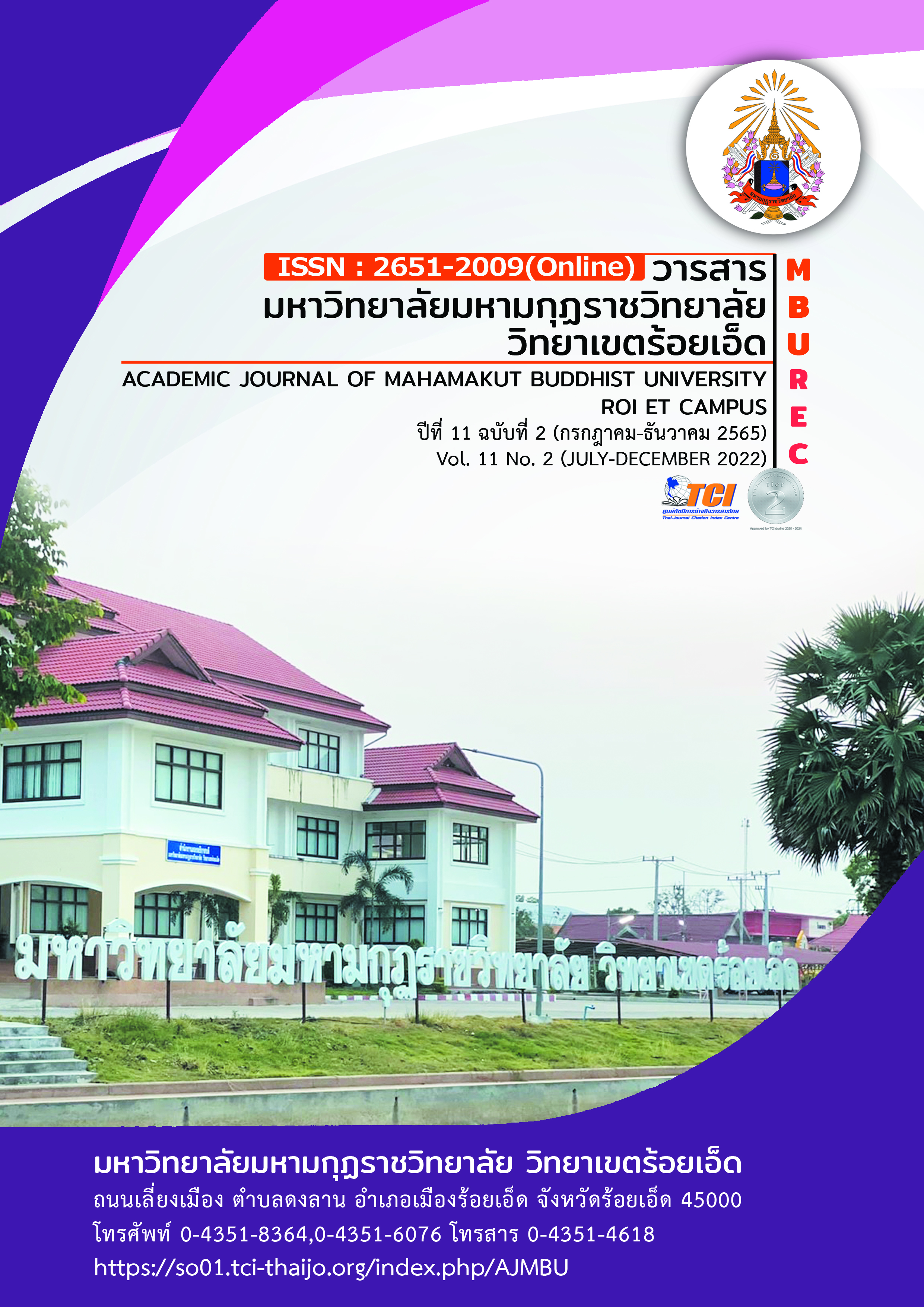PERFORMING/ARTS IN THE LIGHT SHOW & SOUND: THE LEGEND OF NAGA FIREBALL, NONG KHAI PROVINCE
Main Article Content
Abstract
The objectives of the research article were 1) to study the origin of performing arts in the show light and sounds: The legend of Nag fireball work in Nong Khai province, 2018–2020, 2) to study developed performing arts in the show light and sounds: The legend of Nag fireball work in Nong Khai province, 2018–2020. The samples used in the research were, three knowledgeable people, ten performers, ten general public’s The research tools was an observation, an interview questionnaire and presented dates by descriptive analysis.
The finding of this research found that; 1. Performing art in the show light and sound: The legend of Nag fireball work in Nong Khai province was intended to proceed with the script. There were various forms of playing and performing arts of Northeastern folk styles merged throughout the period of the performance. Presented aesthetics to audiences in opus. The format of the performance was divided into five divisions, which were: the first, the origin of the Mekong River Mahanathee, the second, rocket festival, the third, Nakee asked for ordination, the fourth, please Buddhist mother in second heaven where Indra dwells and the fifth, when the 15th day of the waxing moon on the 11th lunar month. There was a concept from belief and faith towards the Naga. In these performing arts, the concept of myths, beliefs of Naga and important events in literature, beliefs and traditions were conveyed by newly invented dramas and dances, plays, song, music that were tied together by merging the patterns of drama, Thai dance, local dance with the Isan locality. 2. Performing arts in the show light and sounds: The legend of Naga fireball work in Nong Khai province to reflect beliefs about the story of Naga by used dance art was an important communication tool by bringing local arts and Thai dance to represent local arts and culture.
Article Details

This work is licensed under a Creative Commons Attribution-NonCommercial-NoDerivatives 4.0 International License.
References
เกสร วรรณราช ผู้ให้สัมภาษณ์. 1 ตุลาคม 2563. ณ ลานวัฒนธรรมหน้าวัดลำดวน เขตเทศบาลเมืองหนองคาย จังหวัดหนองคาย
จารุวรรณ ธรรมวัตร. (2529). คติชาวบ้าน. กรุงเทพมหานคร : อักษรวัฒนา.
ชาญ เกลี้ยงพิบูลย์. (2540). บั้งไฟพญานาคกับการควบคุมทางสังคมศึกษาเฉพาะ : กรณี กิ่งอำเภอรัตนวาปี จังหวัดหนองคาย. มหาวิทยาลัยธรรมศาสตร์.
นงคราญ จันพุทธา ผู้ให้สัมภาษณ์. 2 ตุลาคม 2563. ณ ลานวัฒนธรรมหน้าวัดลำดวน เขตเทศบาลเมืองหนองคาย จังหวัดหนองคาย
ปฐม หงส์สุวรรณ. (2558). ประเพณีสร้างสรรค์ในสังคมไทยร่วมสมัย. ศูนย์มานุษยวิทยาสิรินธร (องค์กรมหาชน).
ภาคิน สกุลวัฒนเกสร ผู้ให้สัมภาษณ์. 2 ตุลาคม 2563. ณ ตำบลในเมือง อำเภอเมืองหนองคาย จังหวัดหนองคาย
ยอดยิ่ง ราชตั้งใจ ผู้ให้สัมภาษณ์. 1 ตุลาคม 2563. ณ ลานวัฒนธรรมหน้าวัดลำดวน เขตเทศบาลเมืองหนองคาย จังหวัดหนองคาย
ศราวดี ภูชมศรี. (2562). ภาพสะท้อนความเชื่อเรื่องพญานาคผ่านการแสดงชุด พุทธบูชา ลีลานาคราช. วารสารศิลปกรรมศาสตร์ มหาวิทยาลัยขอนแก่น. 12(1). 335-352.
สิทธา เชตะวัน. (2526). หลวงปู่คำคะนิง จุลมณี บุกเมืองพญานาค และท่องนรก 2 ฉบับที่ 11 ปีที่ 2. กรุงเทพมหานคร : ศรีสยาม.
สุจิตต์ วงษ์เทศ. (2543). นาคในประวัติศาสตร์อุษาคเนย์. กรุงเทพมหานคร : สำนักพิมพ์มติชน.
สุจินต์ ภมรศิร ผู้ให้สัมภาษณ์. 1 ตุลาคม 2563. ณ ลานวัฒนธรรมหน้าวัดลำดวน เขตเทศบาลเมืองหนองคาย จังหวัดหนองคาย
สุดารัตน์ อาฒยะพันธ์. (2562). การประดิษฐ์สร้างนาฏยประดิษฐ์จากคติความเชื่อเรื่องนาคศรัทธานาค. วิทยานิพนธ์ศิลปศาสตรมหาบัณฑิต สาขาวิชาการวิจัยและสร้างสรรค์ศิลปกรรมศาสตร์.คณะศิลปกรรมศาสตร์ : มหาวิทยาลัยมหาสารคาม.


